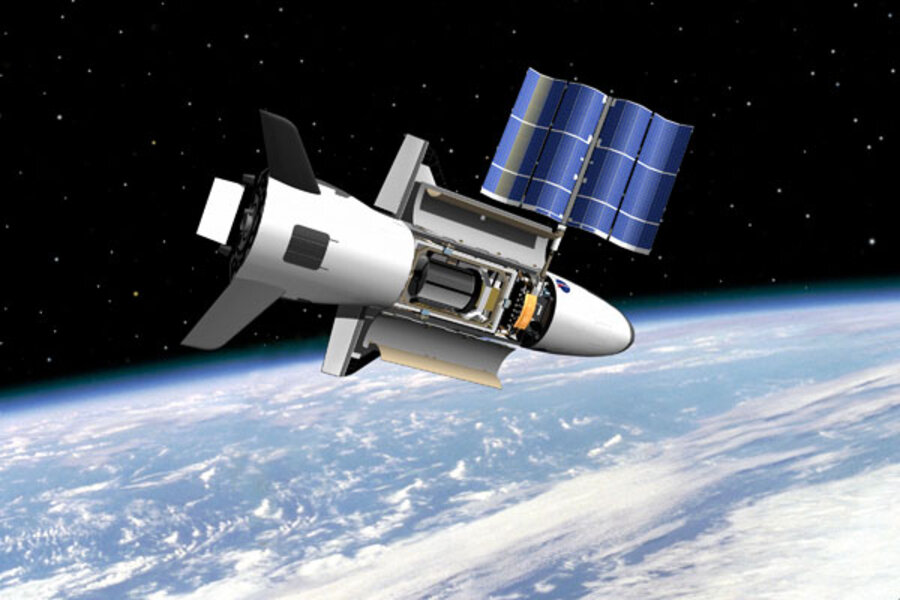DARPA's mysterious X-37B Space Plane Earth-bound
Loading...
The U.S. military's mysterious X-37B space plane will complete its maiden voyage with a return to Earth as early as Friday (Dec. 3), Air Force officials said today.
Personnel at Vandenberg Air Force Base in California are preparing for the return of the unmanned X-37B space plane, which has been aloft on its classified debut spaceflight since April, officials with the Air Force Space Command said in a statement released today (Nov. 30).
"While the exact landing date and time will depend on technical and weather considerations, it is expected to occur between Friday, December 3, and Monday, December 6," Air Force officials said in the statement. [Video of the X-37B in space]
The X-37B, also known as the Orbital Test Vehicle 1, launched atop an Atlas 5 rocket on April 22. Since then, it has been circling the Earth performing a mission that has been shrouded in secrecy. What the reusable spacecraft has actually been doing is classified, as is its mission's cost, Air Force officials have said.
While the Air Force is tight-lipped about the X-37B, skywatching sleuths have been making guesses about the robot plane's mission based on its movements across the sky.
Some amateur gumshoes, for example, speculate that the X-37B is testing experimental reconnaissance sensors as a robotic orbital spy, helping officials gauge their performance before taking the costly step of integrating the sensors into free-flying systems.
The reusable X-37B Orbital Test Vehicle 1 was built by Boeing Phantom Works and is designed to stay in space for up to 270 days using a solar array to generate power.
The X-37B vehicle is about 29 feet (9 meters) long and has a wingspan of just over 14 feet (4 meters) across. It stands just over 9 1/2 feet (3 meters) tall and tips the scales at nearly 11,000 pounds (about 5,000 kg).
This SPACE.com X-37B graphic illustrates some details of the space plane and its relative size.
The craft's payload bay is 7 feet (2.1 meters) long by 4 feet (1.2 meters) across, about the size of a pickup truck bed. It will land much like NASA's space shuttles, which descend on an unpowered glide and touch down at about 200 mph, analysts have said.
Given a successful re-entry, the space plane should navigate itself to a touchdown at Vandenberg in autopilot mode. If the plane strays off its trajectory over the Pacific Ocean, the craft can employ a destruct mechanism.
Edwards Air Force Base, also in California, serves as backup to the Vandenberg landing strip.
The X-37B program is under the banner of the Air Force Rapid Capabilities Office in Washington, D.C., with one job description dedicated to demonstrating a reliable, reusable, unmanned space test platform for the United States Air Force.
The spacecraft was initially built as part of NASA project until 2004, when it was shut down for lack of funding. The project was then transferred to the Defense Advanced Research Projects Agency, or DARPA, with the Air Force taking over in 2006.
The space plane is being operated today under the direction of Air Force Space Command's 3rd Space Experimentation Squadron, a space control unit located at Schriever Air Force Base in Colorado.
A second X-37B – called Orbital Test Vehicle 2 – is also in development, headed for a test mission slated for 2011.





